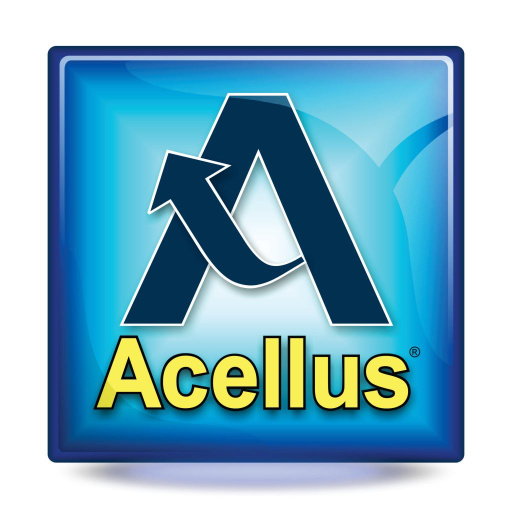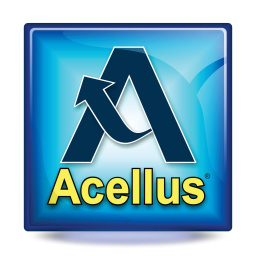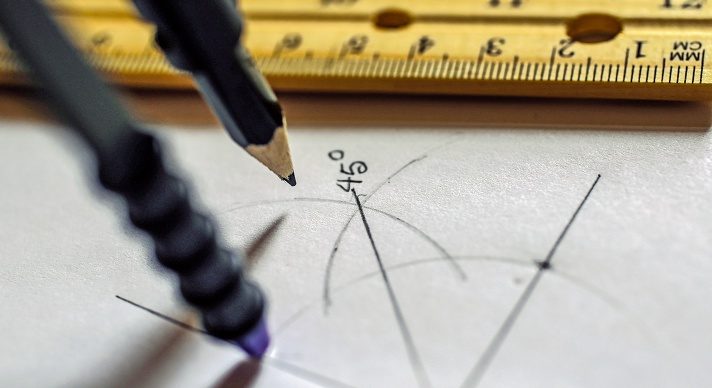Geometry Mid Unit 3 Quiz Review Sin Cos Tan


Geometry

Course Features
Course Duration: Full Year
Form Teacher: Patrick Mara
Prerequisite: Algebra I
Assessment: Pre-Test, Lesson Practice, Unit Exams, Mid-Term Examination, Final Exam
Language: English
Form Details
Course Overview
Acellus Geometry provides students with a cognition of geometric concepts and guides them through the procedure of developing of import mathematical reasoning and proof skills. Students also gain a perspective of how geometry is an integral part of everyday life. Acellus Geometry is taught past award-winning Acellus Principal Teacher, Patrick Mara. Acellus Geometry is A-G Approved through the Academy of California.
Sample Lesson - Congruent Figures
Class Objectives & Pupil Learning Outcomes
Upon completion of this course, students will have demonstrated a mastery of geometric concepts and take developed important mathematical reasoning and proof skills. They volition also be more than aware of how geometry is an integral office of everyday life. Students will be familiar with parallel and perpendicular lines and how to use them to determine bending measures and congruency. Students will learn various theorems and postulates that prove triangle congruency and similarity, including SSS, SAS, ASA, and SAA Congruency Postulates and the SSS Similarity Theorem. Students know how to summate the sum of the angles in a polygon. They as well are familiar with backdrop of parallelograms and how to transform various geometric figures. Students have an understanding of basic relationships within triangles and have been introduced to right triangles and the bones trig functions – sine, cosine, and tangent – and accept experience using them to solve bug. Students know how to calculate the area of a variety of polygons. They know how to calculate the perimeter, area, and book of similar figures. They are experienced computing the surface area and volume for prisms, cylinders, pyramids, cones, and spheres. Students also learn well-nigh circles. They larn how to calculate the circumference and surface area of circles and sectors. They are familiar with chords, arcs, and inscribed angles. Students are familiar with probability distributions and take a deeper understanding of permutations and combinations. They also know how to solve chemical compound and conditional probability problems and take experience with probability models.
 This grade was developed by the International Academy of Science. Learn More
This grade was developed by the International Academy of Science. Learn More
Scope and Sequence
Unit 1 – Tools of Geometry This unit covers nets and perspective drawings, points, lines, and planes. It likewise covers measuring segments and angles, bending pairs, basic construction, the coordinate plane, perimeter, circumference, and surface area. Unit ii – Reasoning and Proof This unit discusses inductive reasoning and conditional statements. It as well discusses biconditionals, deductive reasoning, and proofs. Unit 3 – Parallel and Perpendicular Lines This unit covers transversals, parallel lines, proving lines parallel, parallel and perpendicular, angle sum theorem, more than constructions, equations of lines, and slopes of parallel and perpendicular lines. Unit four – Congruent Triangles This unit of measurement discusses congruent figures, SSS and SAS, ASA and SAA, and corresponding parts. It also discusses isosceles and equilateral, right triangles, and overlapping triangles. Unit 5 – Relationships Within Triangles This unit covers midsegments, bisectors, and centers of triangles. Information technology besides covers indirect proof, and inequalities in one and in two triangles. Unit six – Polygons This unit discusses polygon angle sums, parallelograms, proving a parallelogram, rhombuses, rectangles, and squares. It besides discusses proving special parallelograms, trapezoids and kites, polygons and coordinates, and using coordinates in proofs.
Post-obit this unit students are presented with the Mid-term Review and Test.
Unit 7 – Similarity This unit of measurement discusses ratios and proportions and similar polygons. Also discussed are proving triangles like, similarity in correct triangles, and proportions in similar triangles. Unit 8 – Right Triangles and Trigonometry This unit discusses the Pythagorean Theorem, special right triangles, and trigonometry. As well discussed are angles of elevation and depression, the law of sine, and the police of cosine. Unit of measurement 9 – Transformations This unit of measurement covers translations, reflections, rotations, and compositions. Likewise covered are congruence transformations, dilations, and similarity transformations. Unit 10 – Area This unit discusses areas of paralelograms, triangles, trapezoids, rhombuses, kites, and regular polygons. It besides discusses circles, sectors, and perimeters and areas of similar figures. It also covers trigonometry and area, circles and arcs, lengths of arcs, area addition and subtraction, and geometric probability. Unit of measurement 11 – Surface Area and Volume This unit discusses polyhedra, and surface areas and volumes of prisms, cylinders, pyramids, spheres, and similar solids. It too discusses volumes of cones. Unit 12 – Circles This unit of measurement covers tangent lines, chords and arcs, and inscribed angles. It as well covers angle measures and segment lengths, circles in the coordinate plane, and locus. Unit 13 – Parabolas This unit of measurement explores parabolas and completing the square. Information technology also investigates distance, midpoint, and circles. Unit 14 – Probability This unit of measurement discusses experimental versus theoretical probability, probability distributions, permutations, combinations, chemical compound probabilities, probability models, conditional probability, expected value, and two-way tables.
Following this unit students are presented with the Final Review and Exam.
More Courses by this Instructor
verbrugghentheacted.blogspot.com
Source: https://www.science.edu/acellus/course/acellus-geometry/